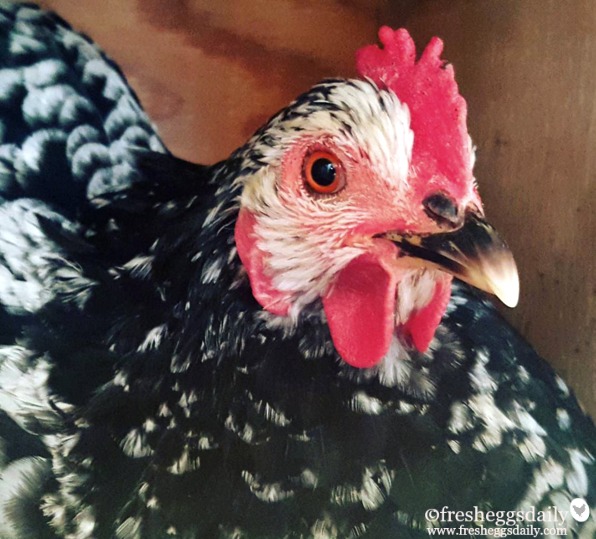What Can My Chickens Comb Color Tell Me | Chicken Coop Jump
What Can My Chickens Comb Color Tell Me

A healthy chicken will normally have a bright, rosy red comb. The comb is an external indicator of chicken health, overall condition and most importantly her circulation. By keeping an eye on your flocks combs, you can often be alerted to internal issues going on.
The combs most important function is to act as a radiator, expelling body heat during the hot summer months. The comb helps keep the chicken cool, which is why the Mediterranean breeds such as Andalusians, Penedesencas, Ancona and White Faced Black Spanish have such large combs.
Each chicken is different, and each breed different, so gauging changes in comb condition and color is the best way to determine whats normal and whats not.
Pale Pink - If a normally rosy comb turns pale pink, that can be a sign of anemia in the chicken, often caused by mites or lice. But before you panic, if its molting season, that could be the culprit. During a molt, a hens comb will lighten up considerably.
A pale comb can also signal heat exhaustion, so keep an eye out on extremely hot days and provide lots of cool water, shade and water-laden treats like watermelon and cucumber slices.
Non-laying pullets that are not fully developed yet also tend to have pale combs. In fact, one sign that eggs might be in your near future is the deepening of the comb color, especially when accompanied by the submissive squat. Incidentally, when a chicken lays an egg, her body draws blood to her vent, and as a result, her comb will get pale, but immediately turn red again once she lays her egg.
A pale comb can also indicate the presence of internal worms, especially when accompanied by watery droppings and a drop in egg production. A worm treatment is highly recommended if you confirm a case of internal parasites through a fecal test by your vet.
Purplish or Dark Red - a purplish comb signals a lack of oxygen in the blood, poor circulation or respiratory/breathing issues. Your chicken could have something caught in her throat if you notice her comb suddenly turn purple. In extreme cases, it can be the indication of a stroke or heart attack. If you suspect your chicken has suffered a stroke, consulting a vet is your best course of action.
Avian flu is another possibility if accompanied by other symptoms such as lack of coordination, soft-shelled eggs, decreased appetite, lack of energy, diarrhea, swelling of the comb, head and eyelids, nasal discharge, decreased egg production or coughing and sneezing.
Brown or Black Spots or Crust - Brownish or black spots on the comb can signal a case of fowl pox in your flock, especially when accompanied by lethargy, loss of appetite and weight loss, and if the scabs start off yellow, then darken, and appear on other unfeathered areas of the body, such as the eyelids or in the mouth. There is a vaccine against fowl pox, but keeping your chicken run and yard free of mosquitoes and your chickens immune systems healthy is the best preventive.
Black or White Spots - One black spot on a single chickens comb is normally not cause for alarm. It might merely be from a pecking incident, scrape or other minor injury. However, multiple black spots or patches that start white and then turn black, especially along the edges of the comb, generally signal frostbite.
A coating of coconut oil or Sierra Sage Green Goo can help prevent further frostbite and also help heal the currently afflicted areas. If you are battling frostbite, be sure your coop is well-ventilated. Moisture in the air will cause frostbite before the cold will.
Rosy, Deep Red Comb - the sign of a healthy, happy laying hen or mature rooster!


Come socialize with me...
Facebook | Twitter | Pinterest | Instagram | YouTube | Bloglovin |Google+
©2016 by Fresh Eggs Daily, Inc. All rights reserved.
This article is © Copyrighted by Fresh Eggs Daily Inc. – All rights reserved - The original content appeared on www.fresheggsdaily.com.You may share this article provided you acknowledge Fresh Eggs Daily as the original source.
What Can My Chickens Comb Color Tell Me